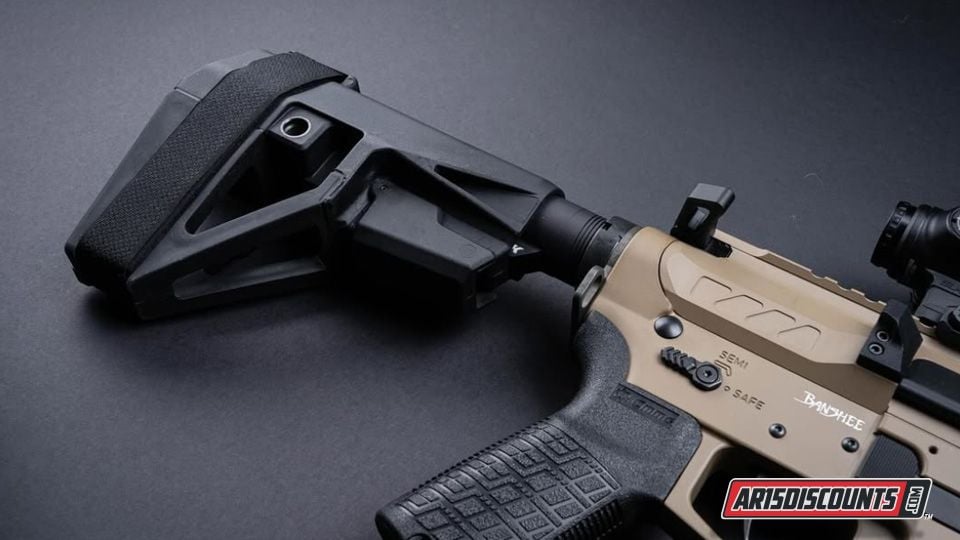Uncategorized
Are Pistol Braces Legal Again? [2025 Update]
It’s been a strange year or two when it comes to building an AR with a barrel shorter than 16″. For a long time, we were able to build something like an 8″ 300 Blackout or a 12.5″ 5.56 AR pistol by simply using a pistol brace on the buffer tube…Alas, almost three years ago, those good times seemed like they were coming to a confusing end. We personally scrambled to SBR a few firearms under the grace period. The good news is that those days are over, and you can again use a pistol brace without fear. Let’s dive into what happened, where we stand now, and everything you need to know to put your mind at ease as you plan your brace purchase.

Why choose a braced AR pistol?
Compact size meets real-world usability…that’s what it;s all about really. A braced AR pistol with a barrel under 16 inches delivers rifle-like handling in a package short enough for vehicle storage, home defense corners, or discreet range bags.
The brace gives a third point of contact against the forearm or cheek, taming recoil from 5.56 or 300 Blackout without the full length and weight of a 16-inch rifle. Truck guns, backpack builds, and bedside options all benefit. Disabled shooters gain one-handed control; able-bodied users gain faster follow-up shots and better low-light sight alignment. Pair a brace with a red dot and a suppressor-ready upper and you have a versatile tool that outperforms many traditional handguns at distance while staying lighter than most carbines. For a deeper dive into how the brace came about, we’d highly recommend this read from our sister publication, ARBuildJunkie.com
The 2023 rule and what happened next
In January 2023 the ATF published Final Rule 2021R-08F, which reclassified many brace-equipped pistols by applying a multi-factor test and in many cases treating them as short-barreled rifles subject to the NFA. That rule spawned immediate legal challenges from states, trade groups, manufacturers, and individuals. Federal courts found the ATF’s multi-factor framework to be arbitrary and capricious, and the rule was stayed and then vacated in litigation. The Department of Justice later declined to pursue further appeals, leaving the 2023 criteria unenforceable.

Current federal status, plain language
With the challenged rule vacated and the government no longer defending it, a pistol equipped with a stabilizing brace is treated as a pistol under federal law, not as an NFA short-barreled rifle. That means no NFA registration or tax stamp is required simply because a pistol has a brace attached. The ATF’s public guidance reflects that the 2023 factoring criteria are not being enforced.
State-level patchwork
Federal vacatur does not automatically change state statutes. Several states continue to treat braces the same as stocks, or otherwise restrict braced pistols. State treatment varies widely, from heavy restrictions to no additional regulation beyond federal law. Check state and local statutes before you travel with or buy a braced pistol. Examples of states that have restrictions or bans include California, Connecticut, Maryland, Massachusetts, New Jersey, New York, and Washington. Other states, including Texas, Florida, Arizona, and Idaho, impose no extra statewide restrictions. Always confirm current local law before you move a firearm across a border.

Options for owners who registered during the 2023 amnesty
Some owners completed NFA registrations during the amnesty period. If you hold an NFA tax stamp and want to remove SBR status from a firearm, consult the NFA Branch or a qualified firearms attorney about the appropriate administrative steps. Reversals, restorations, or corrections are matters for the NFA Branch and timelines can vary depending on paperwork and case specifics. Do not rely on informal advice; use official channels.
Building or buying today
Retailers are once again offering braces in many styles. Under current federal practice, pair a pistol lower with an upper under 16 inches, and quite simply, you are operating in the pistol category.
Remember, adding a vertical foregrip to a pistol may create an NFA-regulated “any other weapon,” so keep pistol ergonomics to angled grips, hand stops, or brace-style contacts if you want to avoid NFA exposure. Suppressors still require Form 4 processing regardless of brace status.

Practical hedging and risk management
As much as we’d like to say this issue is over with for good, the fact is that no regulatory outcome is permanently guaranteed. Future rulemaking or legislation could attempt to revisit braced pistols. Common risk-management steps builders and owners use include keeping a 16-inch upper on hand for quick reconfiguration, filing a Form 1 to register an SBR if you want absolute interstate certainty, or documenting purchase and configuration decisions in case you need to show intent or compliance.
Conclusion
At the federal level, the 2023 pistol-brace rule has been vacated and is not being enforced, which means braces no longer convert pistols into NFA short-barreled rifles simply by attachment. That federal clarity makes it straightforward to build and use braced pistols, but state and local rules still matter. Confirm the rules where you live and where you travel, follow ATF and NFA Branch guidance for any administrative issues, and consider low-cost hedges if you want absolute certainty for interstate movement or long-term ownership plans.


